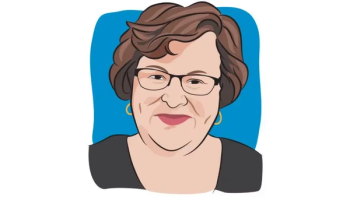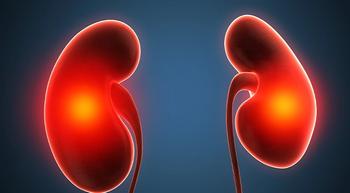
Things Everyone Should Know About Cancer
A cancer veteran lists ten things that ought to be a part of this nation's public health education.
The learning curve was steep for me when I was diagnosed with cancer. My understanding of the beast was too simplistic to let me comprehend much about what my doctors were saying or why they were saying it. And it made easy "cures," like baking soda mixed with maple syrup, sound just plausible enough to make me stop and wonder.
I'm an aging egg-head/control freak, so after my diagnosis, I began a self-education program to learn as much as I could about cancer. Here's what I think everyone should know:
1. Cancer is not just one disease. It's about 200 diseases that share some commonalities. Douglas Hanahan and Robert A. Weinberg summarized these commonalities into ten traits in their landmark article, "The Hallmarks of Cancer," revised and updated to include two more traits in 2011.
Genetic mutation alone, the most popularly known trait, is not enough to make cancer. A whole series of basic cellular mechanisms have to get fouled up in order for genetic mutations to result in you sitting in your doctor's office going deaf and numb while he or she natters on after telling you that your life could come to a premature end.
2. Cancer is a disease of communities of cells — including non-cancerous cells – that work together to promote the development and unbridled growth of badly mutated cells. There are many biochemical processes that collectively support these cell communities, and if one or two of them are altered by cancer treatments, the remaining ones are excellent at creating "work-arounds." That's why cancer is so bloody hard to cure.
3. The tissue in which a cancer originates gives it its name forever after. Cancer that originates in one body part but winds up traveling to another part of the body and growing there (in other words, becoming metastatic) is still called by the name of the place where it originated.
So, lung cancer that sets up shop in the brain is NOT brain cancer. It's metastatic lung cancer, or “brain mets” from lung cancer. The cells that are growing wildly in the brain are lung cancer.
4. In the future, how we see #3 may change. As we learn more about what makes cancer tick, we are finding that cancers that appear in very different organs may be rather alike at the sub-cellular level.
This means that treatments developed originally for, say, colon cancer may wind up working well to treat a sub-set of people who have a form of lung cancer that shares certain key cellular features with colon cancers. Fifty years from now, instead of saying we have lung cancer we may be saying, "I was diagnosed with a tumor over- (or under-) expressing the XYZ-57 marker. Mine appeared in my lung."
5. Cancer recurrence does not proceed step-wise. If you get cancer at stage 1 and later the same cancer comes back, it's not then stage 2, and if it comes back again, it's not then stage 3, and so on. When you are diagnosed with an early-stage cancer (for instance, stage 1), if that cancer comes back and spreads. you have metastatic (stage 4) disease.
6. Early detection does not necessarily save lives. This is a corollary to #5.
We name and treat cancers as if they have progressed only to whatever stage we can see and measure when we discover them (1, 2, etc.). But it is difficult to know for sure whether that's as far as they've gotten. Early-stage tumors may already have metastasized, and we just can't see where yet. The more advanced the stage at diagnosis, the more likely it is that they have. In breast cancer, about 20 to 30 percent are metastatic, according to the Metastatic Breast Cancer Network. Only time will reveal who we all are.
7. Most metastatic cancers cannot be cured. It may be treatable, but that is not the same as curable.
A lot of doctor-patient communications go belly-up over these two terms. The patient may equate "treatment" with "cure." The doctor may not. For instance, if the doctor chooses to tell the patient that they are terminal — and according to a recent Harris Poll, that was published in The Breast Journal, 27 percent of oncologists do not discuss the fact that advanced breast cancer is not curable, and in turn, have told the patient the facts - that they are dying but treatment can buy them some time. But some doctors may shy away from using the term "dying," as they prefer to dance lightly over the word "incurable," and concentrate their attention on the "treatment" side of things. (It sounds so much more positive and hopeful…right?)
However, the patient then walks away thinking that any kind of treatment implies the intent to cure, despite the odds. And they love their doctor because they think he or she is fighting to save (not just prolong) their lives. Because of this, the patient may choose invasive, painful and actually, pointless interventions in the hope that the steady decline in their health is just a temporary setback, thus delaying a call to the one service that could actually make their final days better: hospice.
8. On rare occasion a metastatic patient may achieve the coveted NED status — no evidence of disease. The treatment may be so effective that all traces of the disease disappear. But that may not last indefinitely. In many cases, the ever-wily cancer develops resistance to the treatment being used, and it returns to continue its takeover of the patient's body.
9. All that being said, cancer — even metastatic cancer – is not usually an immediate death sentence nowadays. A couple of decades ago, a diagnosis of cancer often meant a very quick end to your life. Today, thanks to more effective treatments, a few cancers can be cured, and many cancers can be slowed down and even put into remission for shorter or longer periods of time.
This has given rise to a rapidly growing number of cancer survivors who are trying to figure out how to live with the long-term side effects of having had what are, in truth, pretty brutal treatments. But I feel that “Big Medicine,” however, having saved our lives, considers its job basically done and is only marginally invested in trying to understand and ameliorate those effects.
10. All of the above might make you resolved to live your life "right" so that you can avoid getting cancer, as a friend of mine once told me. However, as he and countless others like him have discovered — and this is important, so listen up:
You can increase your risk of getting cancer; you can decrease your risk of getting cancer. But you CANNOT eliminate your risk of getting cancer, unless you die of something else first.




